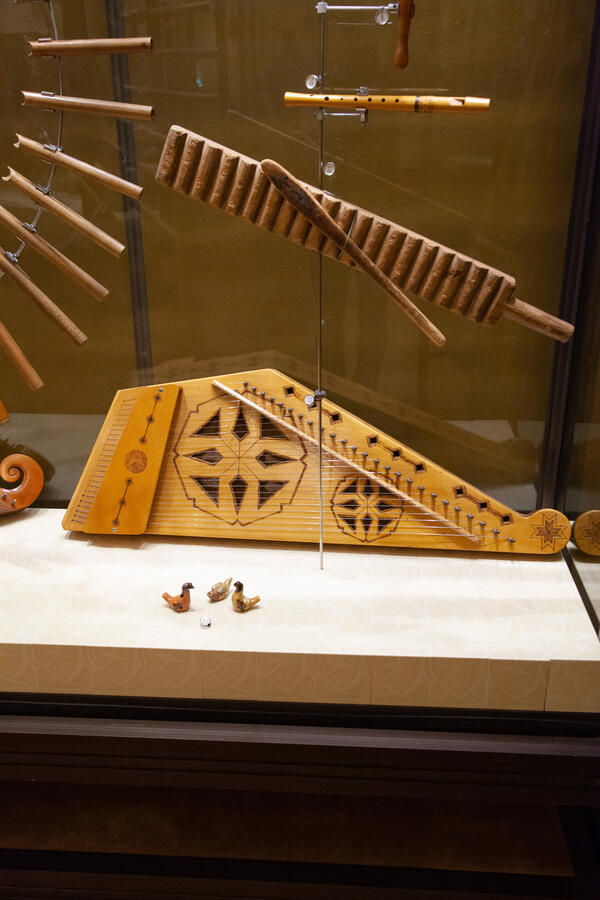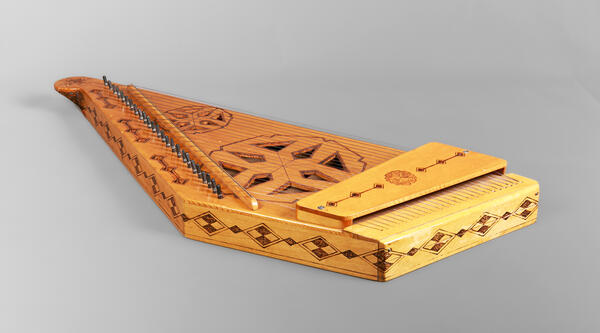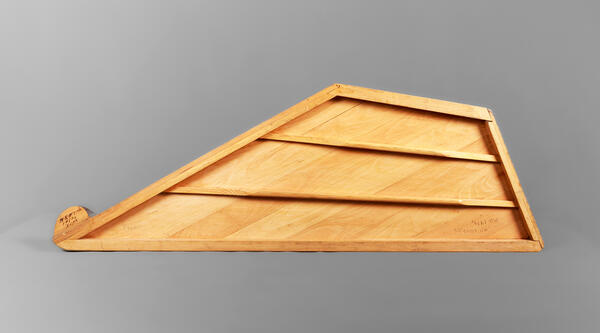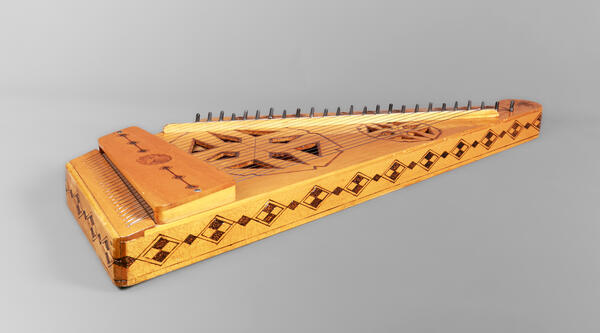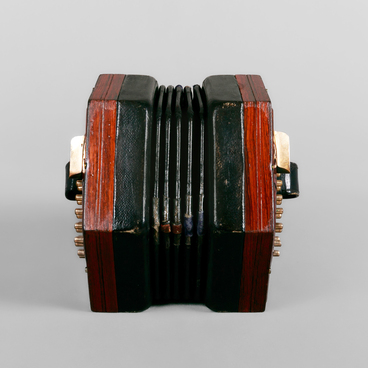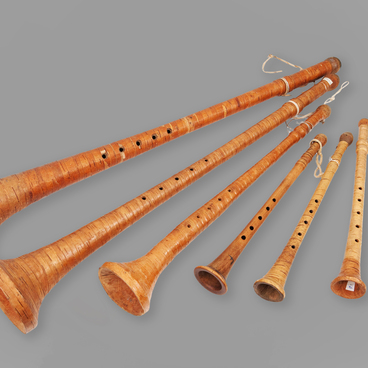The kokles (or kokle) is a Latvian plucked string instrument of the zither family. The 25-stringed kokles from the museum’s collection was manufactured in Riga in 1959. Three years later, it was presented to the museum by the Directorate of Fine Arts Exhibitions and Panoramas at the State Committee on the Arts of the USSR Council of Ministers.
The kokles has common features with other similar instruments, including Lithuanian kanklės, Estonian kannel, Karelian and Finnish kantele, and Russian wing-shaped gusli. The kokles has a trapezoidal or wing-shaped body with a thin wooden soundboard.
In the old days, kokles strings were made of thin gut or plant fibers. Later, metal strings came into use. They were made of steel or brass. Traditionally, there were from 6 to 9 strings which later increased to 10 as the instrument was further improved.
The first kokles musicians were Baltic people. Folklore researchers believe that an entire class of professional kokles musicians existed as early as the 13th century. They were often mentioned in epics, legends, and fairy tales.
According to one of the legends, a boy rescued an old man from death in a swamp. In return, the old man gave him a kokles and instructed him to play the instrument for the people whose “peace of mind” was disturbed.
Another folk tale says that the kokles strings are actually sun rays, and the instrument itself represents the human soul. Traditionally, the kokles was used as a solo instrument, but sometimes it was also used to accompany singing.
In Latgale, one of the Historical Latvian Lands, the kokles was used as an accompaniment for Christmas carols. Back then, dancing music was not played on the kokles, because it was supposed to be a sacred instrument. Nowadays, the kokles is included in the Latvian Culture Canon.
To celebrate the importance of this national instrument, its image was depicted on a Soviet postage stamp in 1991, a commemorative coin in 2013, and a Latvian postage stamp in 2014.
The kokles has common features with other similar instruments, including Lithuanian kanklės, Estonian kannel, Karelian and Finnish kantele, and Russian wing-shaped gusli. The kokles has a trapezoidal or wing-shaped body with a thin wooden soundboard.
In the old days, kokles strings were made of thin gut or plant fibers. Later, metal strings came into use. They were made of steel or brass. Traditionally, there were from 6 to 9 strings which later increased to 10 as the instrument was further improved.
The first kokles musicians were Baltic people. Folklore researchers believe that an entire class of professional kokles musicians existed as early as the 13th century. They were often mentioned in epics, legends, and fairy tales.
According to one of the legends, a boy rescued an old man from death in a swamp. In return, the old man gave him a kokles and instructed him to play the instrument for the people whose “peace of mind” was disturbed.
Another folk tale says that the kokles strings are actually sun rays, and the instrument itself represents the human soul. Traditionally, the kokles was used as a solo instrument, but sometimes it was also used to accompany singing.
In Latgale, one of the Historical Latvian Lands, the kokles was used as an accompaniment for Christmas carols. Back then, dancing music was not played on the kokles, because it was supposed to be a sacred instrument. Nowadays, the kokles is included in the Latvian Culture Canon.
To celebrate the importance of this national instrument, its image was depicted on a Soviet postage stamp in 1991, a commemorative coin in 2013, and a Latvian postage stamp in 2014.

